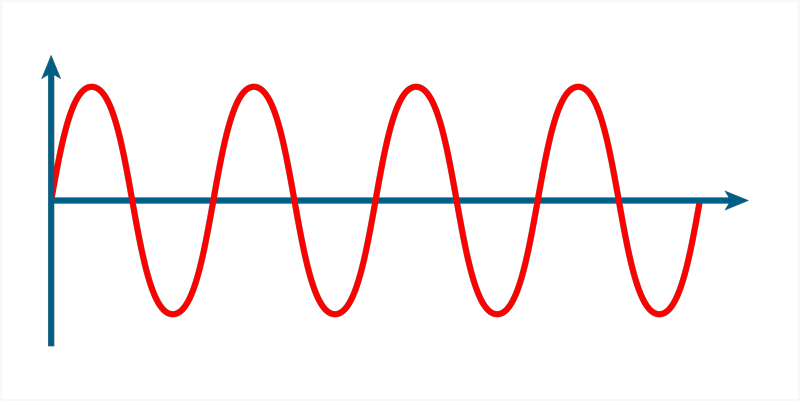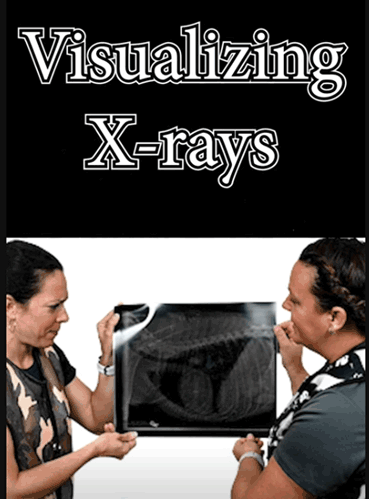An Investigation in Earth Systems
Let's start by watching this short video of how a car warms up in the sun.
Now, for the quest:

Leo loves to go with us when we are in the car. But in the summer we can’t always take him places because the car gets too hot sitting out in the sun. Why does the car get so hot sitting in the sun? Why does the car get hotter in the summer than in the winter?
Discussion:
Do a word web as a class about the question. “Why does the car get hotter in the summer than in the winter?”
The word web should be teacher-guided but student-made. The reason for this is to get students thinking about the steps they need to take to learn something new.
Introduction to waves:
Let's start with where the energy came from... The sun gives off energy in the form of waves. Before we look at waves from the sun, we need to understand what a wave is and the various kinds of waves.
The Parts of a Wave

A wave has several key parts.
These parts are essential for understanding and describing the behavior of waves in different contexts.
Visualizing the parts of a wave demo:
This video shows how to demonstrate the part of a wave with a spring. You can just use a slinky to demonstrate this.
Another video explaining how to use a rope or spring in the first 10 minutes of our 2020 PD video
Supplies:
- A rope, spring, or slinky
Waves are everywhere. They help us hear sounds, see light, and even communicate using radios and phones. Understanding waves helps us understand many things about how the world works.
So, next time you see ripples in a pond or hear your favorite song, remember that it's all about waves!
Types of waves
Let's dive into the two main types of waves: mechanical waves and electromagnetic waves. Understanding these can help us see how different kinds of waves move and interact with the world around us.
Mechanical Waves
Mechanical waves need a medium (something to travel through) like air, water, or solid objects. They can't travel through empty space. There are two main types of mechanical waves:
-
Transverse Waves: The wave moves up and down, but the energy travels forward. Imagine shaking a rope up and down.
- Examples:
- Water waves: The ripples you see when you throw a stone in a pond.
- Waves on a string or rope.
- Examples:
-
Longitudinal Waves: The wave moves back and forth in the same direction as the energy travels. Imagine pushing and pulling a slinky.
- Examples:
- Sound waves: When you speak, sound waves travel through the air to reach someone’s ears.
- Seismic P-waves: These waves move through the Earth during an earthquake.
- Examples:
Key Characteristics of Mechanical Waves:
- Require a medium (solid, liquid, or gas) to travel through.
- They can be transverse or longitudinal.
- Examples include sound waves, water waves, and seismic waves.
Videos Demonstrating Mechanical Waves:
- The Wave Machine (YouTube Short)
- Tibetan Singing Bowl (YouTube Short)
- Spooky Sounds of a Theremin
- Spooky Sounds of a Theremin (YouTube Short)
- The Sound of Silence (YouTube Short)
Can Sound Travel in a Vacuum? - Hoot Tubes
- Creating Fire by Reflecting Heat
- String Phone
Electromagnetic Waves
Electromagnetic waves do not need a medium to travel; they can move through empty space (a vacuum).These waves are part of the Electromagnetic Spectrum. They include the visible light that you can see as well as UV light, IR light, Microwave, and even gamma waves. These waves travel about 186,000 miles (300,000 kilometers) per second. This means a beam of light could go 7 ½ times around the world in one second.

We can see from the NASA graphic above that there are all types of waves included in the electromagnetic spectrum. Let's explore some of these waves.
Types of Electromagnetic Waves (from longest wavelength to shortest):
Radio Waves: Used for communication, like radio and TV signals.
Radio waves have the longest wavelengths in the electromagnetic spectrum.
Ways of demonstrating radio waves:
- Cell phone
- Radio
- Walkie talkie
Microwaves: Used in microwave ovens and for certain communications.
Video How Radar Works
Ways of demonstrating microwave energy:
- Cook popcorn in the microwave
Infrared Waves: Felt as heat; used in remote controls and thermal imaging.

Ways of demonstrating infrared light:
- IR thermometer
- IR camera
- TV Remote
- IR Remote sensing
Visible Light: The only part of the electromagnetic spectrum we can see with our eyes. This includes all the colors of the rainbow.

Measuring Visible Light lab (has a virtual option)
Students will use a spectrophotometer to learn about the wavelengths that correspond with visible light.
Ways of demonstrating visible light
- vis spectrometer
- prism glasses.
Ultraviolet (UV) Light: Causes sunburns; used in black lights.
Put in your location to see the real-time UV light Index from the EPA

Ways of demonstrating ultraviolet light:
- UV beads
- Black lights
X-rays: Used to see inside the body in medical imaging.
Video Visualizing X-Rays (YouTube Short)
Gamma Rays: Produced by nuclear reactions; used in cancer treatment.
Virtual Lab Introduction to Radioactivity (has a gamma component)
In this lesson, students will investigate the nature of radioactivity and the effect of both distance and shielding materials on different radioactive sources using a Geiger-Muller tube with a counter, (generally referred to as a nuclear scaler).
Videos about Nuclear energy
- Understanding Nuclear Energy: How a Nuclear Power Plant Works
- Nuclear power as a clean energy source (YouTube Short)
Key Characteristics of Electromagnetic Waves:
- Do not require a medium; can travel through a vacuum.
- Always transverse waves.
- Include radio waves, microwaves, infrared, visible light, ultraviolet, X-rays, and gamma rays.
Now that we understand how energy is transferred, let's keep exploring to understand what causes a car to heat up!
Seasons
Well, all that energy from the waves must do something! Right! Let’s look at this simple setup of a radiometer.
Supplies:
- Radiometer
- Flashlights
- Flood light
- Science journal
- Pencil
- Thermometer
- Light source. (Incandescent)

The radiometer setup is a good model of how the Earth works too. We see that some of the earth gets more direct light and others get more indirect light at different times of the year. This is due to the tilt of the Earth.
Videos
Why Some Planets Have Seasons (YouTube Short)
Albedo
Now let’s explore what happens to that energy once it hits the Earth.
Which will warm up faster a dark cloth or a light cloth in the sun? Here is a video showing fabric warming up in the sunlight.
Supplies:
- IR Thermometer
- White cloth
- Black cloth
You can do this in the classroom with lights with incandescent bulbs.
Another demonstration that shows darker materials absorb more energy than light materials.
Demo: Laser and balloons
- Supplies:
- Green 100 mw Laser Pointer
- White balloon
- Black balloon
Now let’s look at the Earth.
Pull up Google Earth and zoom out to see that the Earth has lighter and darker places.


You can have students do this or do it as a class.
Guiding students- Zoom in to different levels and observe the different features or structures.
- Are there light and dark places?
- What do you think happens in these areas?
Convection Currents
OK, if things absorb different amounts of energy and the darker materials warm up more than the lighter materials, what does that do to the Earth?
Model Convection currents in a tank.
Full video of the convection currents demonstration.
Short Video of the convection currents demonstration.
But why do convection currents work?
Density straws activity
The Density Straws activity allows students to develop an understanding of density. This can be then used to analyze the convection current demonstration to help students understand how convection works.

- Student handout NOTE: I do not give this to students before the lesson. I only use it as a scaffolding tool for groups needing a bit of help.
Greenhouse
Overview of greenhouse gases:
Teachers: Link to the 2022 PD session overviewing this activity
Check out the page with all of our virtual labs.



